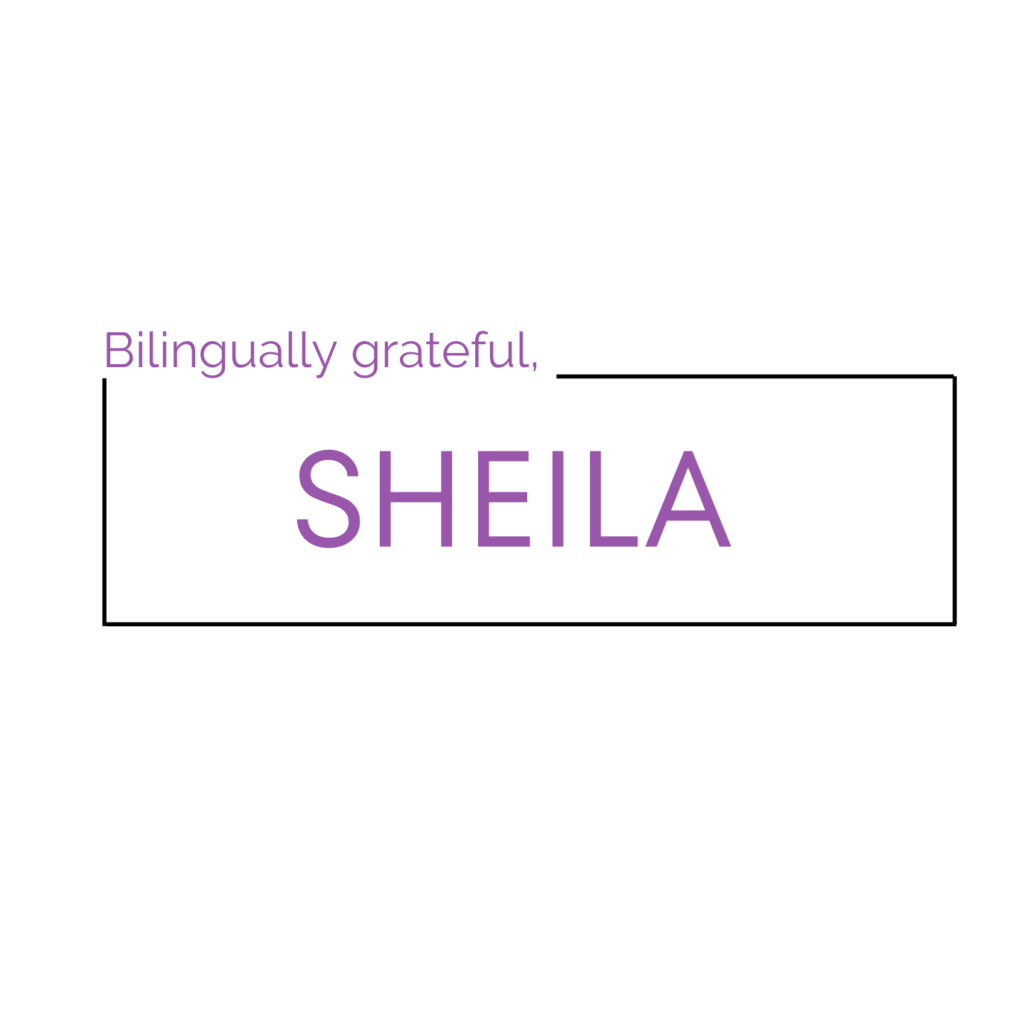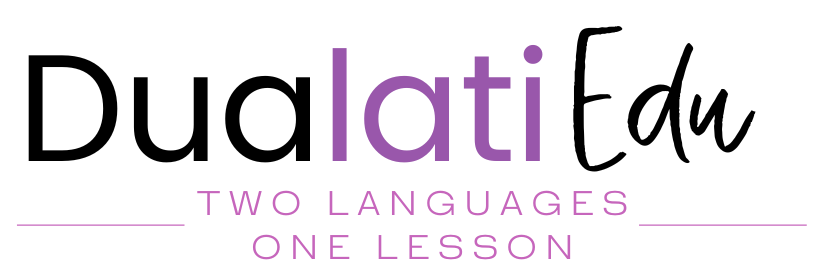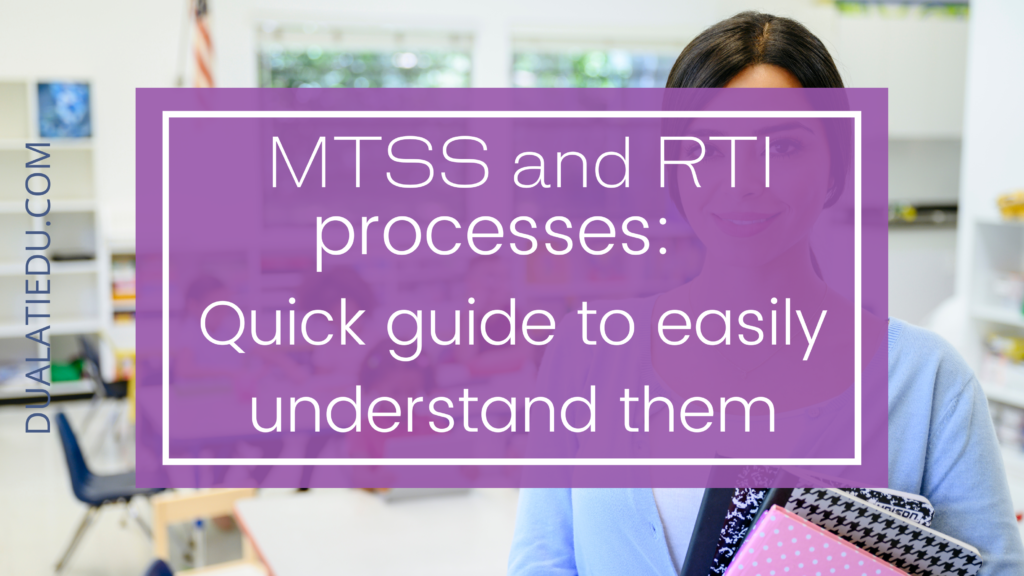It’s that time of year! Teachers are constantly reflecting on what next steps need to be taken or tweaked to maximize student learning. However, big changes in the calendar, such as a new semester, brings a longer, more in-depth look into what and how we will plan next. This is where understanding the MTSS and RTI processes can come in handy!
Yes, you have been teaching for weeks and have had the opportunity to observe your students’ academic and behavioral progress in your whole group, guided lessons, centers and formal assessments. You already know who is above or on grade level and those who may need more support.
You can now create lessons plans that can address specific group or individual needs.
On a side note, establishing routines for centers creates a classroom environment that provides time for the teacher to focus on small groups or individual students. So, make sure that those are set up or revised as needed. Book clubs are a great way for students to be actively engaged while the teacher conducts small group instruction.
As a former reading specialist and administrator, teachers would ask me to help them with the process of identification of students’ areas of growth, plan interventions and progress monitoring that would be specific and efficient.
Having structured guidelines made the process easier for teachers to identify, create and implement interventions that would either address the concerns or facilitate discussions for additional evaluations and support such as those provided through special education or 504 plans.
Multi-tiered System of Support (MTSS)
MTSS is a framework schools use to address an academic, speech, medical or behavioral concern.
But first, what does the MTSS framework entail?
Universal Screener
A universal screener is an educational tool used in an entire classroom to identify students who need assistance. Screeners are science-based, brief, valid and reliable, have a clear cut-score and are administered at different intervals throughout the year.
Examples of universal screeners:
Teacher professional development
Teachers may graduate from college (or alternative certification programs) with diverse levels of knowledge in the intervention process. Schools need to focus on training in identifying struggles such as dyslexia or behavior challenges.
Holistic approach
Students and teachers are not the sole stakeholders at school.
So, a cohesive integration of support from teachers, parents, instructional specialists, administrators, counselors and medical staff is imperative to assess needs accurately. It is also crucial that all parties participate in creating a strategic and efficient plan.
Response to Intervention (RTI)
RTI is a multi-tiered approach to identifying areas of difficulty and supporting students by providing quality instruction as explicit, systematic and sequential intervention.
What does the MTSS framework entail?
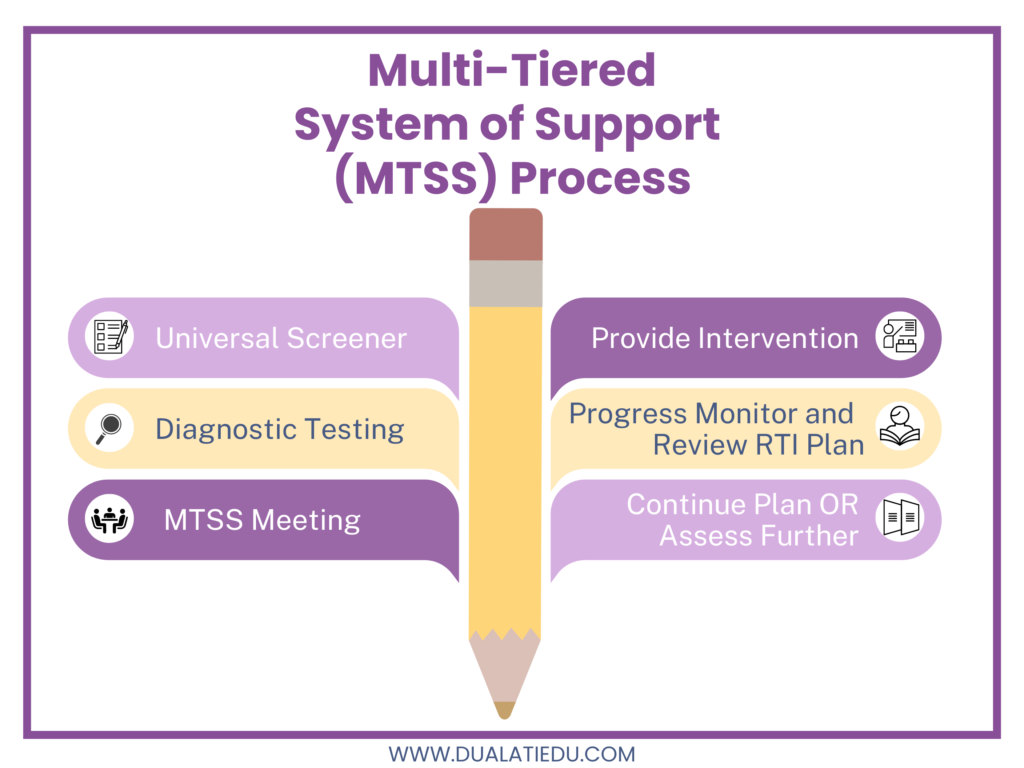
- Administer a universal screener in the area of focus (reading, writing, math), and follow the guidelines provided by the author of the screener to identify students who have further diagnostic or intervention needs.
- The teacher (or other professional such as an instructional specialist, dyslexia designee, school counselor, school psychologist) will provide a more in-depth diagnostic assessment. An example of this could be a phonics assessment.
- Afterwards, a committee of student education stakeholders (teacher, parent, instructional specialist, dyslexia designee, school counselor, school administrator, school psychologist, and school nurse) convenes and devises an action plan. Discuss favorable outcomes and timelines.
- Designated personnel provides intervention and documents progress.
- If intervention seems to be working, the intervention will continue until the timeline discussed in the meeting to reconvene to share progress.
- However, if the student is showing no progress before the committee reconvenes (a reasonable amount of time should be provided, however), talk to the MTSS chair or administration for guidance.
- Ask for additional testing (dyslexia, special education, behavioral) or resources if intervention did not help.
For teachers to be able to provide small group or individual instruction, they must teach students how to work independently or in centers. I will not address centers in this blog post, but you can find some ideas here.
The RTI intervention model
The diagram below illustrates the tiers of the Response to Intervention process.
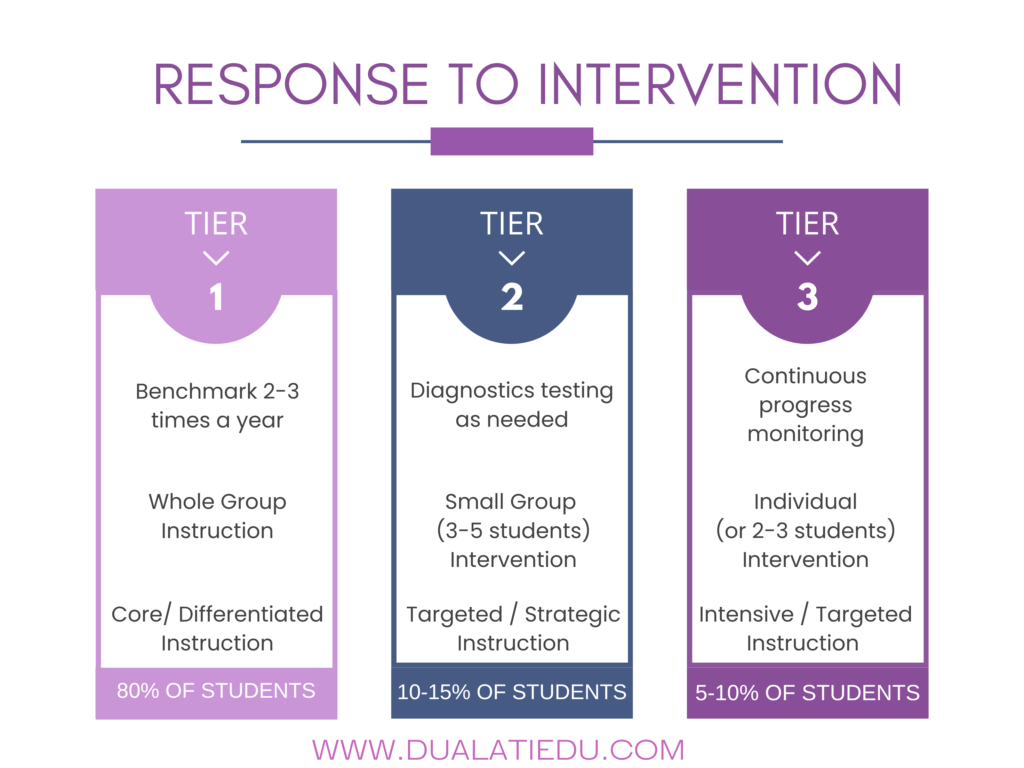
- Tier #1: Teacher provides whole group core instruction. Even though it is for the entire class, teachers plan for differentiation using Universal Design.
- Tier #2: Teacher provides small group (3-6 students) strategic instruction.
a)The universal screener provided information about which students to help within this tier.
b) Design a plan of intervention utilizing SMART goals. The diagnostic assessment can provide insight into skills that need to be addressed. Then, provide 30-45 minute intervention for 6-8 weeks (speak to your MTSS for school-specific guidelines).
c) Document progress monitoring at least once a week which should include teacher observations.
d) Teacher can determine if the student no longer needs the strategic intervention and move into Tier #1, remain in Tier #2, or move to Tier #3.
- Tier #3: Teacher provides individual or small group (2-3 students) intensive instruction.
a) The universal screener provided information about which students to help within this tier.
b) Design a plan of intervention utilizing SMART goals. Then, provide 45-60 minute intervention for 6-8 weeks (speak to your MTSS for school-specific guidelines). These goals may address standards of previous grade levels.
c) Document progress monitoring at least once a week that may include teacher observations.
d) There can be support (or a need for support) from teachers outside of the classroom such as reading specialists, dyslexia specialists, special education teachers, behavior specialists, etc.)
Discuss with the MTSS committee the progress or needs of the student, including further testing for learning disorders.
Here is a step-by-step guide on how to create RTI goals.
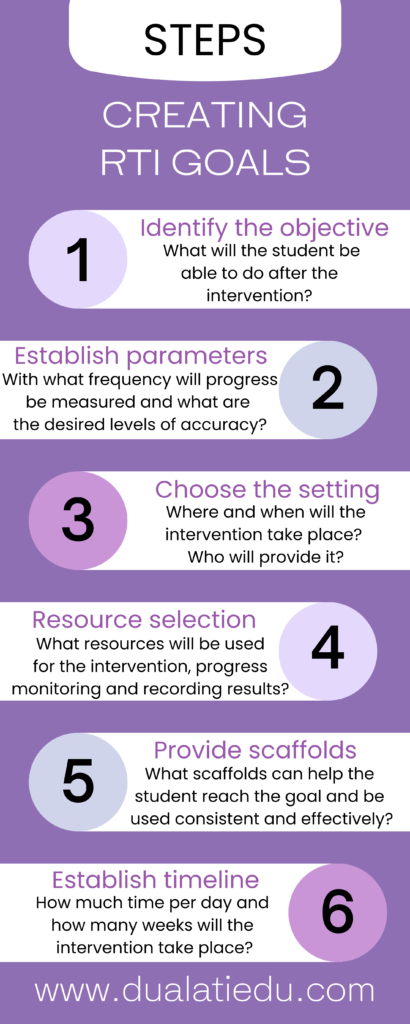
RTI Intervention Plan Templates
Templates are an effective tool for gathering the most information before you meet with the MTSS team.
You can also use specific templates for a systematic way to document the intervention and progress monitoring.
These will be helpful in the post-intervention meeting as decisions are fact-based, goal-oriented and efficient.
Share filled-out templates with educational diagnosticians, so they can use them in behavioral or academic testing should the committee suggest the need for further evaluation.
Hope this was helpful and clears any doubt on how to create your own procedures to address your students’ needs.
For even more information, check out Alison’s blog on Response to Intervention at Toad-ally Exceptional Learners!
